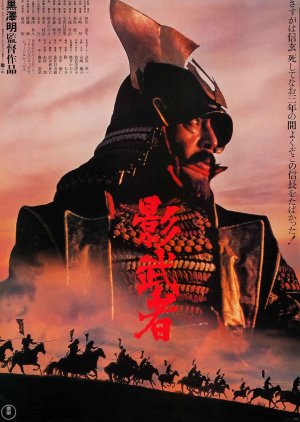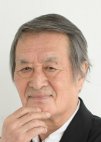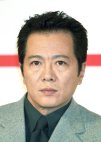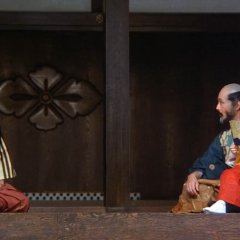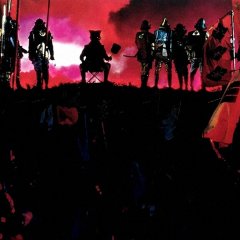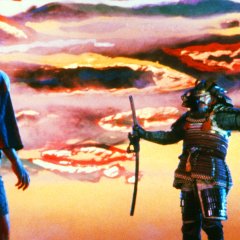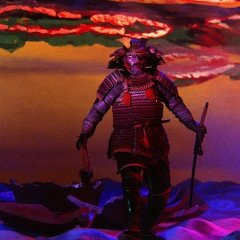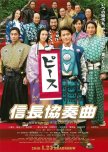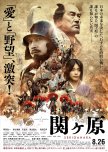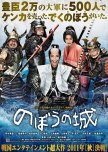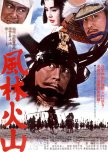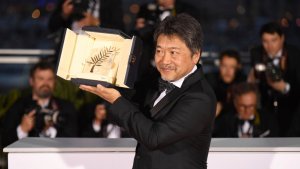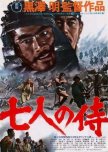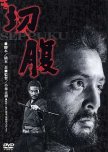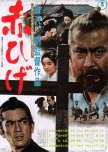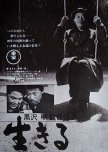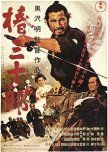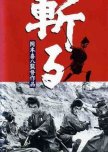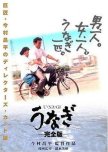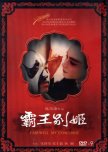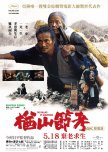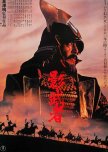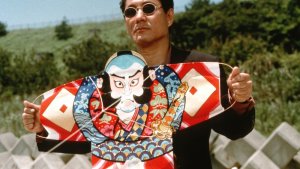 Takeshi Kitano Is Gearing Up to Direct His Final Film "Kubi"
Takeshi Kitano Is Gearing Up to Direct His Final Film "Kubi" - Français
- English
- magyar / magyar nyelv
- dansk
- Titre original: 影武者
- Aussi connu sous le nom de: Shadow Warrior
- Scénariste et Réalisateur: Kurosawa Akira
- Scénariste: Ide Masato
- Genres: Action, Militaire, Historique, Guerre
Distribution et équipes
- Nakadai Tatsuya Rôle principal
- Yamazaki TsutomuTakeda NobukadoRôle Secondaire
- Hagiwara KenichiSuwa KatsuyoriRôle Secondaire
- Jinpachi NezuTsuchiya SohachiroRôle Secondaire
- Otaki HidejiYamagata MasakageRôle Secondaire
- Ryu DaisukeOda NobunagaRôle Secondaire
Critiques

Cette critique peut contenir des spoilers
"The Shadow of a man can never stand up and walk on its own"
Kurosawa Akira had long dreamed of making Kagemusha. When Toho finally agreed to fund it, they were unable to finish financing it. In stepped George Lucas and Francis Ford Coppola along with 20th Century Fox and Suntory Whisky to see that the movie was completed.The story was based on real people and events leading up to the 1575 Battle of Nagashino. The warlord Shingen Takeda had longed used a double to protect himself during the tumultuous time. When his current double tired of the role, they found a thief ready to be executed who was his spitting image. When Shingen is killed the shadow has to take his place, convincing friends, family, and enemies that he is the real deal. Only a handful of advisors and guards know the truth. History would lead to a tragic end for the clan and the shadow.
This was not one of my favorite Kurosawa films. There were very few closeups and with a huge cast made it very difficult to identify people and their particular contingencies. Nakadai Tatsuya made a great foil for Mifune Toshiro in earlier films, but I found him lacking in this role. He didn’t have enough charisma and intensity to win me over. Despite the three-hour running time, little of it was spent on character development. Many pivotal scenes took place off camera. I had difficulty connecting with any of the characters and didn’t feel invested with any of them. They felt like distant obscure images.
The long still pauses Kurosawa used to great effect in his older movies became one long film this time. You have to be very patient to watch three hours of slow, quiet interactions from dozens of characters. If they had spent some of that time delving into the imposter’s feelings and life, giving me a better sense of who he was, I would have enjoyed it more.
Most of the battle scenes were underwhelming, often filmed in the dark. Two battle scenes used red lights in the background to simulate a castle burning, much as if it were a play on a small stage. Instead of seeing the action, a character was shown hearing the battle sounds. Even the final climactic battle left much of it unseen, mostly shown through the imposter’s reactions. I did find the final scenes of stunned, wounded horses attempting to rise to their feet deeply disturbing as the human carnage lay around them.
By all accounts, Kurosawa took liberties with the final battle. A ridiculously large rainbow over the ocean, while beautiful and unrealistic, was some distance from where the army would have traveled, but it did make for a nice shot. Kurosawa wanted to show the destruction of the Takeda by its enemies’ fire power even if some aspects of the battle went differently in real life.
In the end, as a body drifts past the clan’s flag, we’re shown that the currents of time are sweeping away not just the Takeda but a way of life as well. I learned several things from this film. There is a price to be paid for an unbridled ego. Blind loyalty leads people blindly to their doom at times. And never bring a sword to a gun fight.
Kagemusha didn’t have enough character development to make it a good character study and not enough quality battle scenes to make it a good war movie. In the end, I found it to be an impersonal, dryly told story at a glacial pace. Perhaps Mifune could have elevated it as he did other Kurosawa films, but that’s only wishful thinking.
12/2/22
Cet avis était-il utile?

Though I appreciate its sprawling shots and attention to detail (having literally hundreds of men dressed in armor, the careful and deliberate shots of Shingen and those bowing to him, etc.), it was a fairly slow movie, and I don't feel I really got to know any of the characters. The actors did a good job, but one general in particular was prone to overacting (literally shouting his lines in an otherwise silent room, which seemed a bit much); the score was used mainly for battle scenes, and the songs fit thematically. Viewed from a historical fiction perspective, it was a satisfying epic that had several transitional periods in the movie, and its conclusion seemed fitting, but I wouldn't necessarily recommend it or rewatch it any time soon.
Cet avis était-il utile?

